Achieving 50-30: Five Insights for Advocacy Champions to Help Move the Dial for Women in STEM
Back to Posts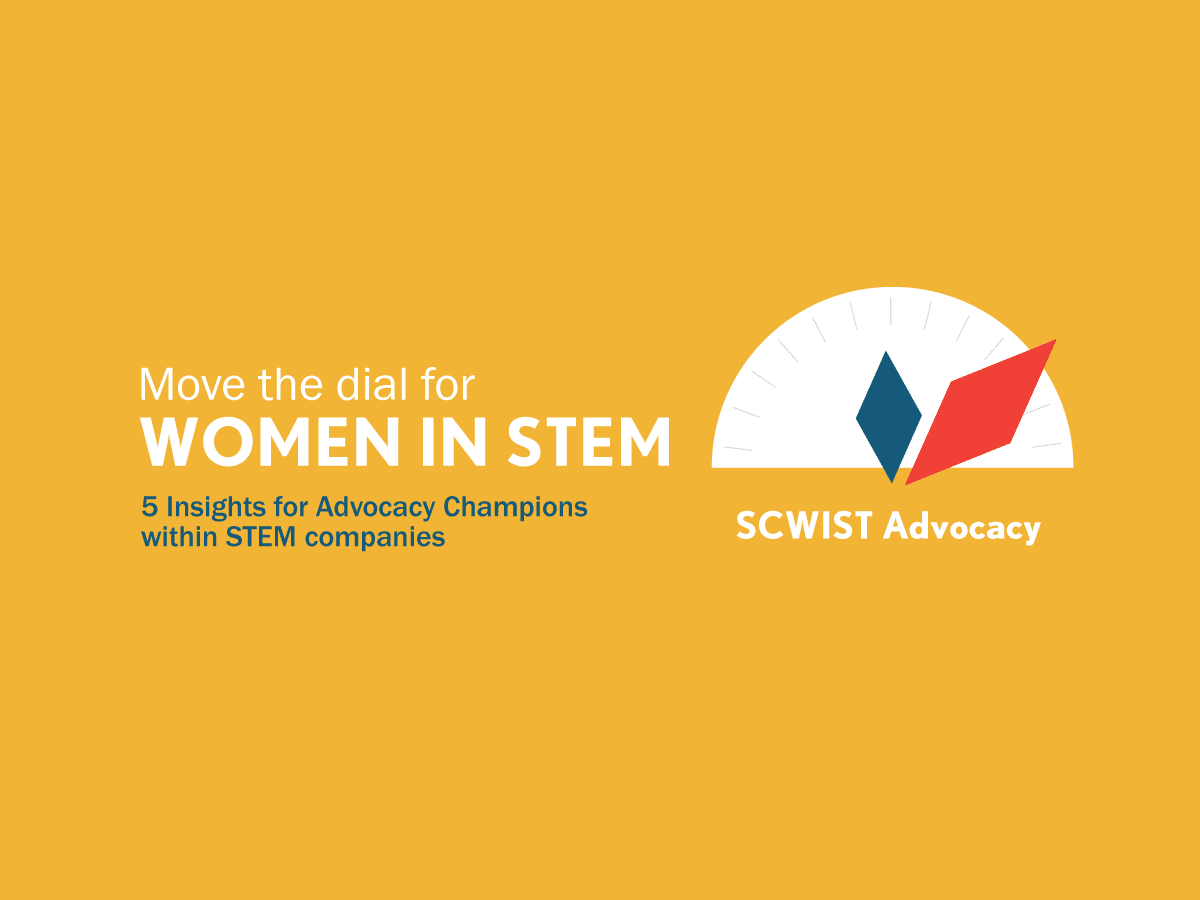
Moving the dial for women in STEM
Written by: Élizabeth Martel Project Leader, Eveline Pasman Committee Member, Melanie Ratnam Advocacy Director and Camila Castaneda SCWIST Communications and Events Coordinator.
Representation for women in STEM remains low across Canada in spite of the recent increase in Equity, Diversity, and Inclusion (EDI) resources and consulting firms. In an effort to understand how STEM companies can catalyze change, 552 STEM employees responded to SCWIST when asked about their perspectives on EDI and what they feel would help move the dial forward.
What is the 50-30 Challenge?
Announced by the Minister of Innovation, Science and Industry on December 10, 2020, The 50–30 Challenge is an initiative between the Government of Canada, business, not-for-profit, the public sector, and diversity organizations to improve access for under-represented groups to positions on corporate boards and in senior management.
The 50–30 Challenge sets two goals for the boards and senior management of each participating organization: gender parity (50 percent) and significant representation of under-represented groups (30 percent). Under-represented groups include: Racialized, Black, and/or People of Colour (“Visible Minorities)”, People with disabilities (including invisible and episodic disabilities), 2SLGBTQ+ and/or gender and sexually diverse individuals, and Aboriginal and/or Indigenous Peoples (including those that identify as First Nation Peoples, Métis Nation and Inuit).
What does diversity mean to our survey respondents?
To our survey respondents, diversity boils down to two words: being different. They desire a space to freely develop ideas and solve problems knowing they are being treated equally and have access to the same opportunities as everyone in their company. They wish to be valued for the diverse perspectives they bring to their organizations and would like to see discriminatory workplace policies eliminated.
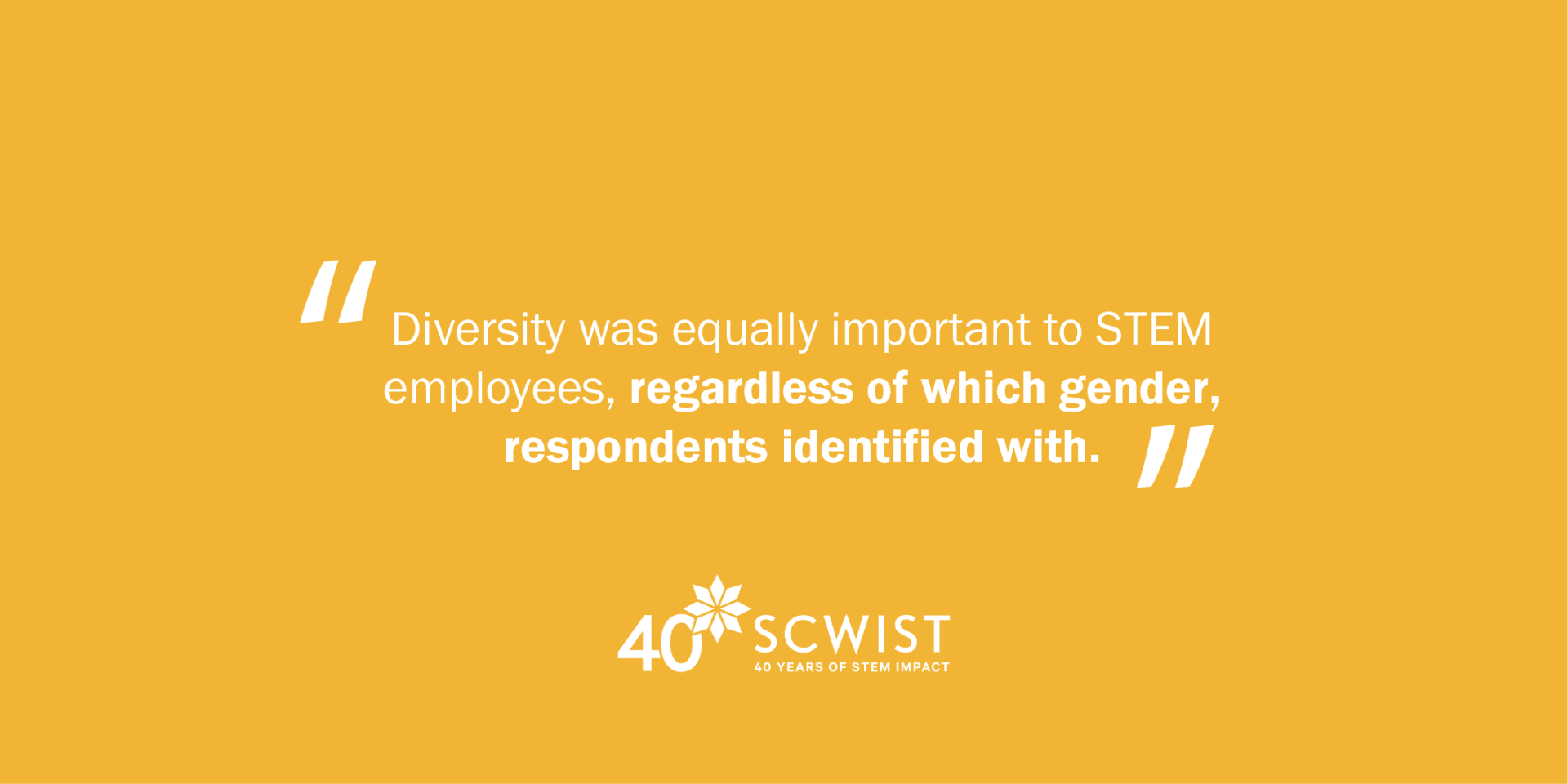
Diversity was equally important to STEM employees, regardless of which gender, respondents identified with (52% identified as man, 44% as woman and 4% as non-binary or non-conforming). In contrast, diversity was more important to respondents who identified with one or more underrepresented groups (e.g. visible minority persons, people living with disabilities, members of the LGBTQ2 community, as well as Indigenous Peoples) when compared to those who did not identify with an underrepresented group. Notably, 90% of our survey respondents identified with one or more under-represented groups.
Is your company talking about EDI?
If left unaddressed, the disportionate barriers that women in STEM experience will only be worsened by the fourth industrial revolution and this underscores why now more than ever, STEM companies can no longer afford to ignore EDI. A company-wide awareness of EDI is critical to achieving the necessary shift in culture needed to drive change in the workplace. While a small portion of respondents indicated that their companies are ahead of the curve, 90% reported that there is a moderate interest for EDI training and educational seminars at their company. Though 89% of respondents reported having an EDI designated role or department within their companies, it is clear that there is still more work to be done. Indeed, 93% of the respondents say their company would be interested in getting help to achieve 50-30.
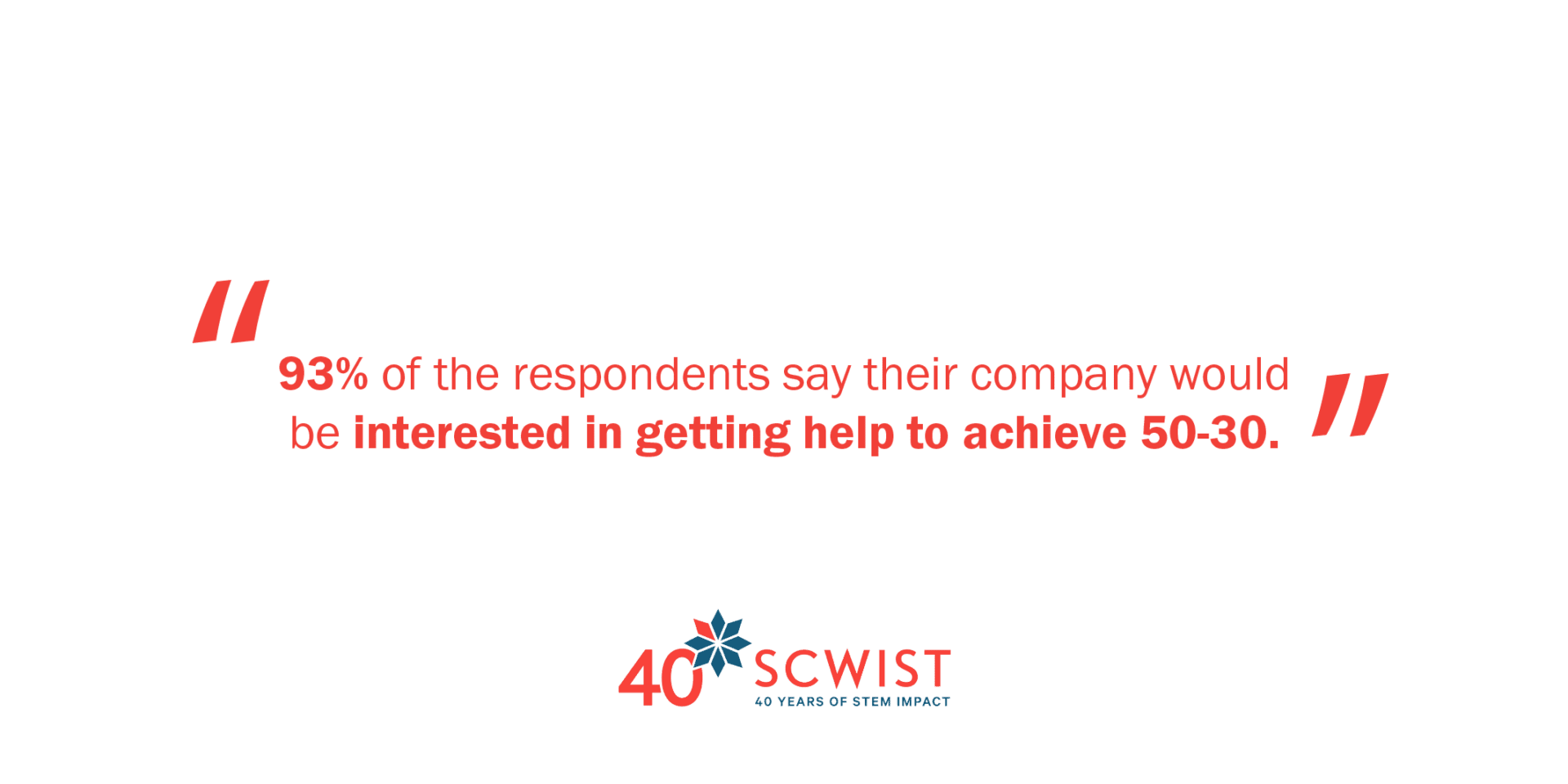
Allyship is also important when examining effective strategies to catalyze change. Our survey results revealed that even individuals who did not identify with an underrepresented group demonstrated an interest in fostering EDI where 31% found EDI ‘very important’.
Which challenges need to be addressed in the workplace?
Employees of STEM companies, whether in entry-level, intermediate-level, or senior-level roles, think that one of the main obstacles preventing their organizations from taking more action towards an equitable, diverse, and inclusive workplace is unawareness that there is a diversity and inclusion issue. This result was somewhat unsurprising as 75% of employees that identified as males found that people who look like them are well-represented at their organization as a whole, as well as at the senior management or board level. In contrast, only 55% of women felt the same way. Those who need this change are not in positions of power and are a minority amongst their colleagues, which ultimately makes it hard to find support.
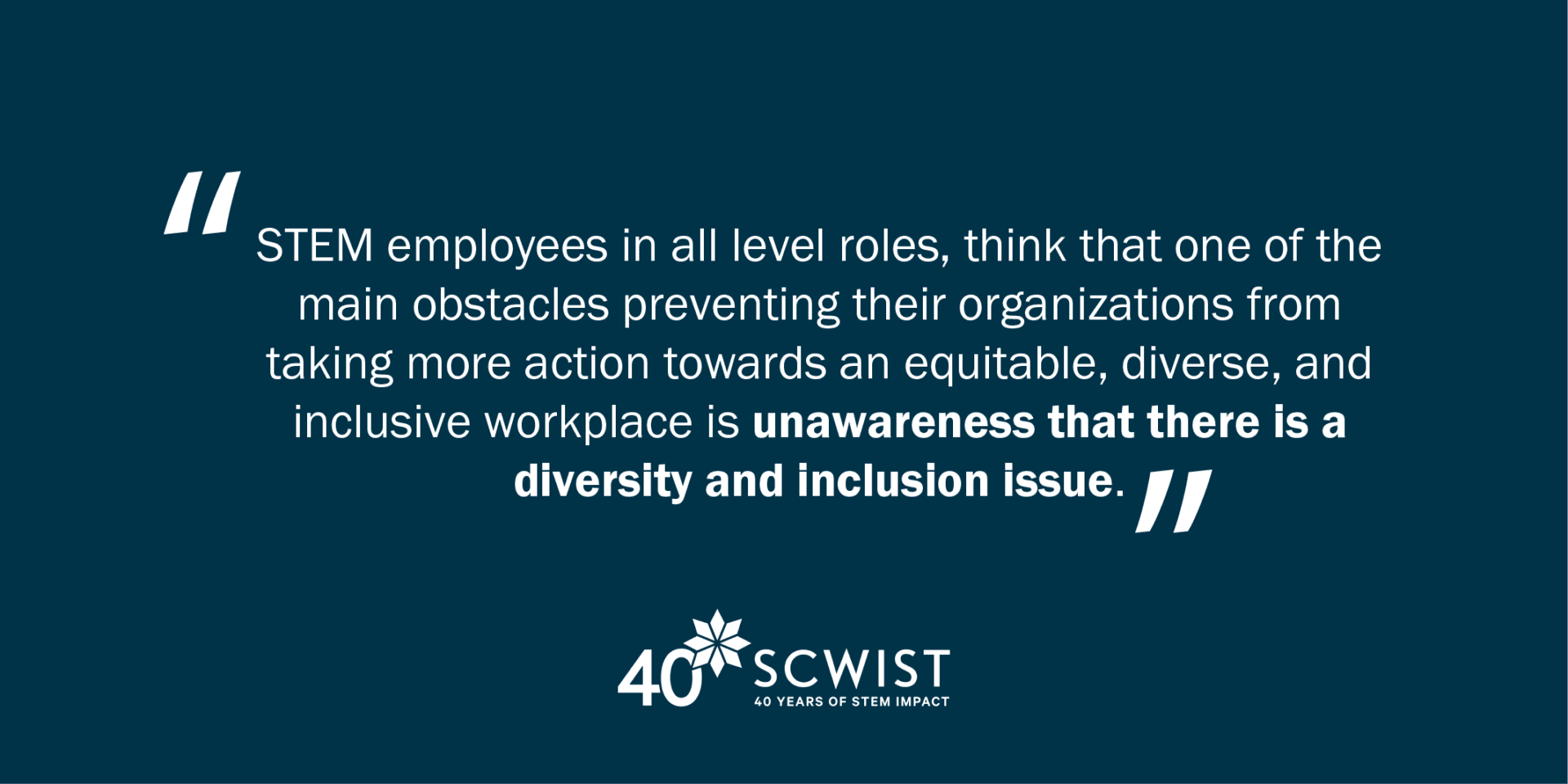
If you’re reading this post and feel like you’re among the minority, the good news is that you are probably not the only one at work looking for change. SCWIST found that 30% of employees of medium size STEM companies (100-499 employees) feel like they have allies in their organization that share their vision for change. For small (1-99 employees) and large (500+ employees) companies, this percentage was 48% and 40%, respectively. In spite of these encouraging survey results, 60% of our respondents, regardless of how long they have been working at their current place of employment, wish they had more allies in their organization that share their vision for change. It is therefore safe to say that you are likely among colleagues who will support efforts to facilitate conversations about EDI.
To learn HOW to influence and advocate for change, check out our Advocacy Toolkit.
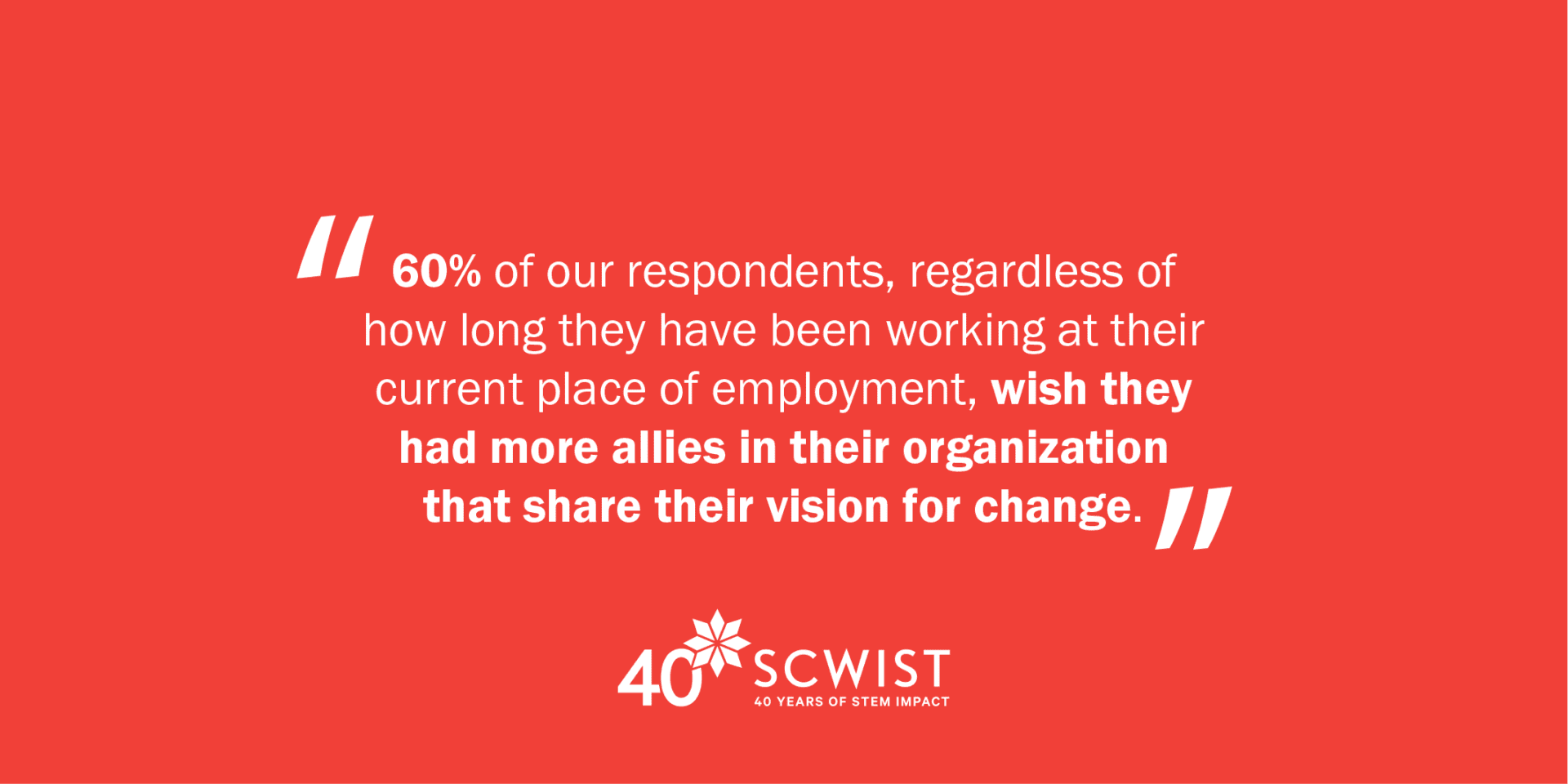
Finally, when it comes to making the workplace more equitable, diverse, and inclusive, survey respondents felt that the main obstacles were:
- Company culture
- Attitudes of senior management
- Resistance from co-workers to internal EDI initiatives
Respondents mention that “at an organization where turnover is very low, change takes time” emphasizing the fact company culture can be hard to change. However, this change is critical for a more inclusive workplace if you want to get all your employees on board and overcome the “invisible resistance from colleagues” when it comes to EDI practices.
The fourth and final obstacle is that “it can be challenging to get budget approval from senior stakeholders” for EDI initiatives. Thus, an Advocacy Champion on the executive team who can emphasize the implementation of EDI practices as one of the company’s strategic goals is just as important as having Advocacy Champions among staff/employees. This multi-tiered approach to EDI can be a game changer when it comes to affecting change in the workplace.
Want to learn more about being an Advocacy Champion? Check out our STEM Diversity Champion Toolkit
How do STEM employees want to see EDI addressed?
Creating a workspace that is diverse, respectful, and inclusive takes time, effort, and work from both the company (e.g. senior management) and its employees.
As a company, your priority should be to address and educate employees around unconscious biases…At least that’s the opinion of over 58% of our survey respondents, whether in entry-level, intermediate-level, or senior-level roles. In addition, entry-level employees also feel that retention and promotion, as well as onboarding practices and policies, need to be addressed.
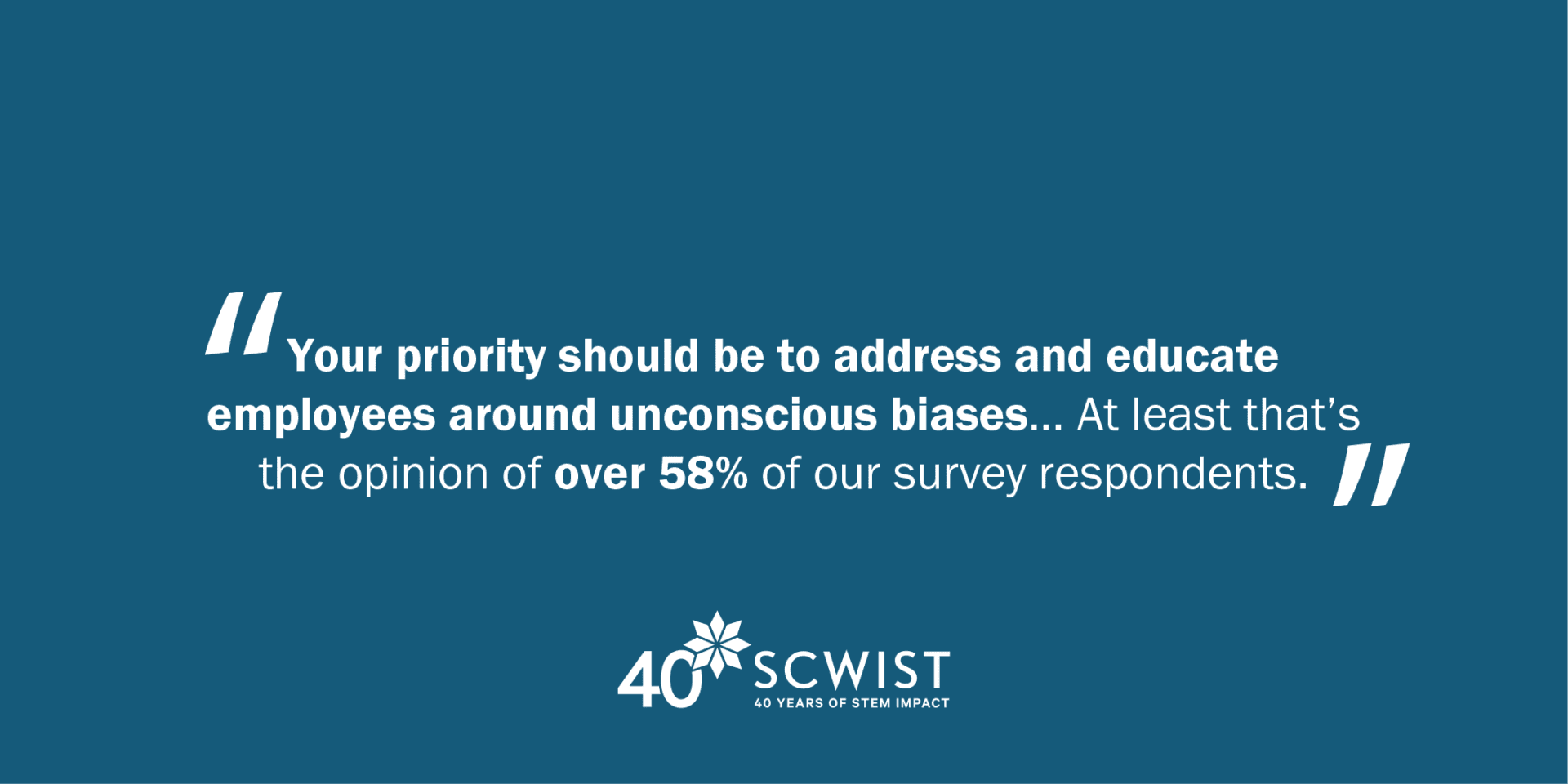
Other topics that respondents would like to see addressed by their companies are:
- To offer flexible holiday time off instead of pre-determining holidays off
- To use a writing style guide for company communications that clarify what is appropriate and bias-free language
- To provide incentive for more diversity through awards or recognition
Finally, respondents also emphasized that all of these efforts must take into account the intersectional approach needed in EDI policies for true transformative change to occur.
Amidst the emerging tech revolution, it’s imperative that STEM companies prevent the gap from widening. As life-long partners of women in STEM, SCWIST asks you to share our 50-30 Infographic with other Advocacy Champions on social media so we can move the dial for women in STEM together!